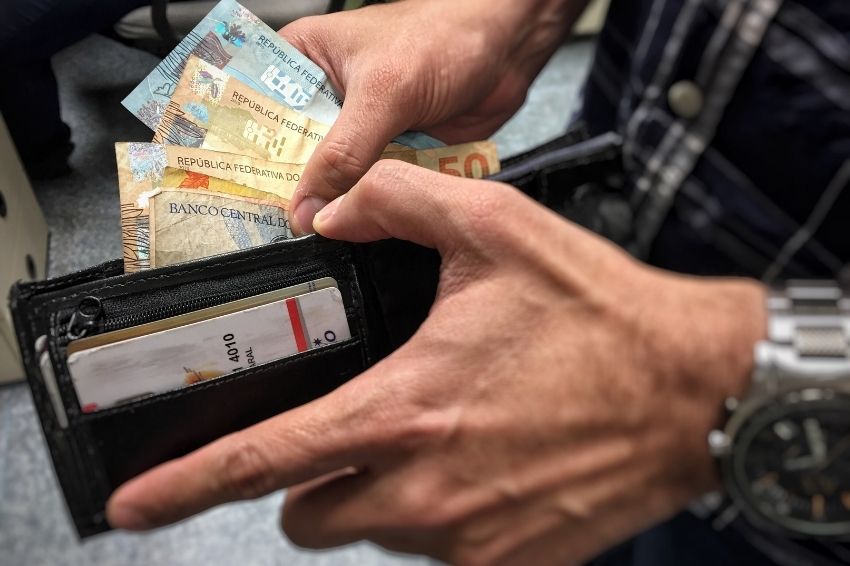Brazil is experiencing the greatest water crisis of history. To give you an idea, the reservoirs of the Southeast and Central-West hydroelectric plants ended the rainy season with the lowest level in the last six years.
On May 10, for example, the reservoirs that supply the two regions reached the mark of 33.7% of energy storage capacity.
In the midst of this drought scenario, Idec (Brazilian Institute for Consumer Protection) carried out a survey and highlighted a factor that further highlights the country's critical situation and which is weighing on Brazilians' pockets.
According to research, consumers are paying R$ 8.7 billion per year to fund thermal plants. The calculation identified 33 plants that would not be complying with the performance conditions stipulated in the supply contracts signed with the distributors.
“Our analysis identified plants with contracts totaling 6.5 GW on average, whose unavailability rates are higher than contractual limits,” said Clauber Leite, coordinator of Idec’s Energy and Sustainability Program.
Because of this, the Institute sent a letter to ANEEL (National Electric Energy Agency) warning about the problem and asking for action.
The contracts between thermal plants and distributors provide for the possibility of termination in the event of three consecutive years of unavailability – which may occur due to operational failures or maintenance stoppages – at a value greater than that used in calculating the plants' physical guarantees.
The calculations considered the plants' fixed revenue, that is, how much they receive just for being available. “If activated by the ONS (National Electric System Operator), these thermal plants also receive the CVU (variable unit cost), mainly related to the cost of fuel”, explained Leite.
The set of plants includes thermal plants using mineral coal, diesel oil, fuel and natural gas. The most serious cases highlighted by the company are those of Termorio, UTE Mauá 3 and Candiota 3, whose annual fixed revenues are, respectively, R$ 1.24 billion, R$ 1.06 billion and R$ 734.5 million.
According to Idec, the values are being passed on to consumers via energy tariffs. “The impact could be even greater because, without the energy from these plants, the ONS is forced to look for other thermal plants – even more expensive – to supply the market”, concluded the expert.
EPE publishes study on unavailability of thermal plants
EPE (Energy Research Company) published, this week, a study on the unavailability of thermoelectric plants in operation. The report indicated that, since the end of 2020, the SIN (National Interconnected System) has been going through a critical period of inflows.
Between September last year and April 2021, the worst turnout at the SIN in 90 years of history was recorded. Furthermore, the research showed that values range from 2,500 to 4,500 MW of unavailable power in the period from January to March.
“The full use of the existing thermoelectric park has faced difficulties due to these high rates and other electrical restrictions (energy flow limits)”, reported EPE.
The Energy Research Company also found that in 2020 diesel thermal plants were unavailable, on average, 53% of the time. In the case of fuel oil thermal plants, the unavailability was 26%, while for gas and coal plants, the number corresponded to 19%.
In 2011, the rates were even lower: fuel oil (on average, 3%), diesel (4%), coal (12%) and gas (14%).
Solar energy proves to be a solution to the water crisis
For Rodrigo Sauaia, CEO of ABSOLAR (Brazilian Association of Photovoltaic Solar Energy), solar energy is seen as essential to help save water in reservoirs, relieving the operation of the national energy matrix and consumers' pockets, as well as contributing to a Brazil cleaner, more sustainable and more competitive.
“Our matrix currently has more than 60% of its installed power from the water source. We know that it depends on the 'good mood' of the rain, on having it in the right place and with the right frequency so that it can be stored and used. This is a challenge for us, considering the dry times we have been through for at least five years.”
Click here and read more about the importance of solar in the face of the water crisis.

















One Response
Brazil has always gone against the grain of social issues, treating inequalities with coldness and hunger, in the same way it has never invested in renewable energy, such as solar and wind energy, both situations controlled by economic power, which protects the liberal interests of capital.
The lack of social and ecological awareness of the political class and government officials does not have the courage to make a decision to define a plan to end the extraction of mineral coal and its consequent burning to generate electricity in thermal plants in the south of the country. Everyone is aware of the damage caused by coal mines, the impacts in their surroundings and along the water courses, as well as in the thermal plants where they burned, from where greenhouse gases come out through tall chimneys to unbalance the ozone layer, resulting in in climate change…!!!